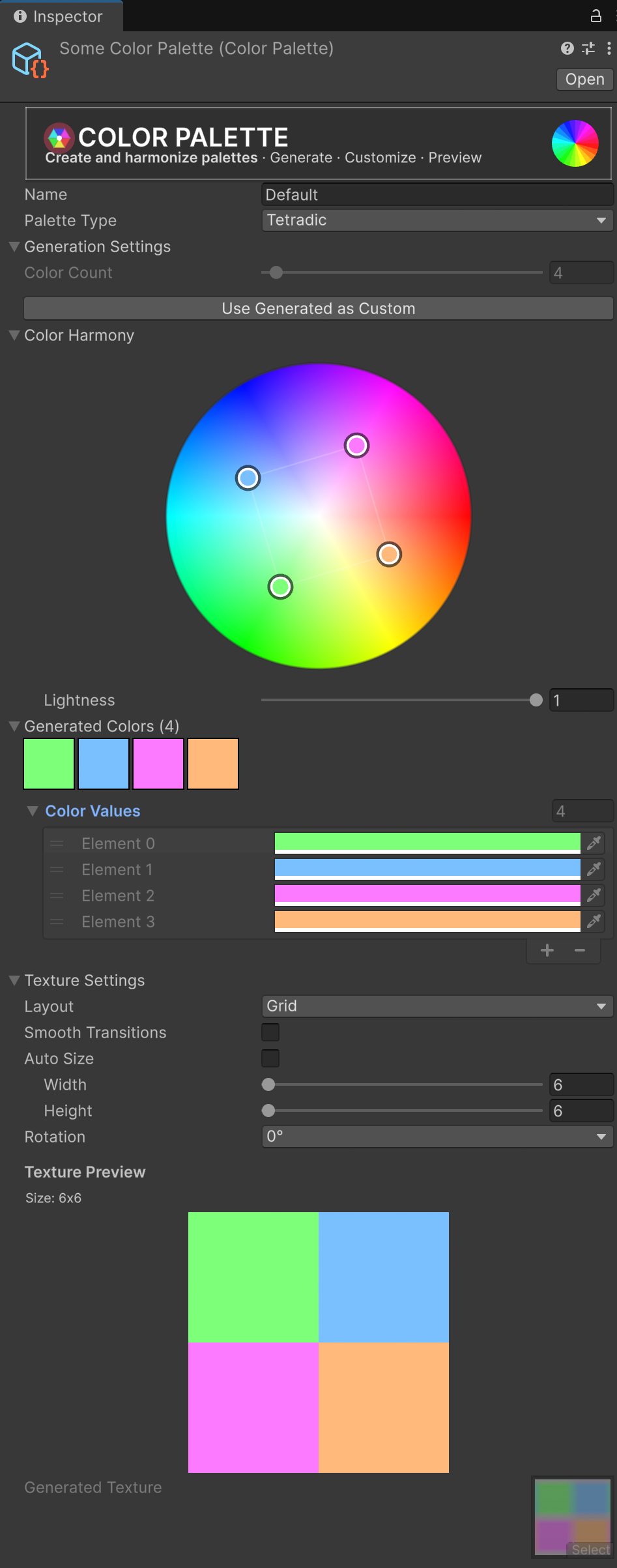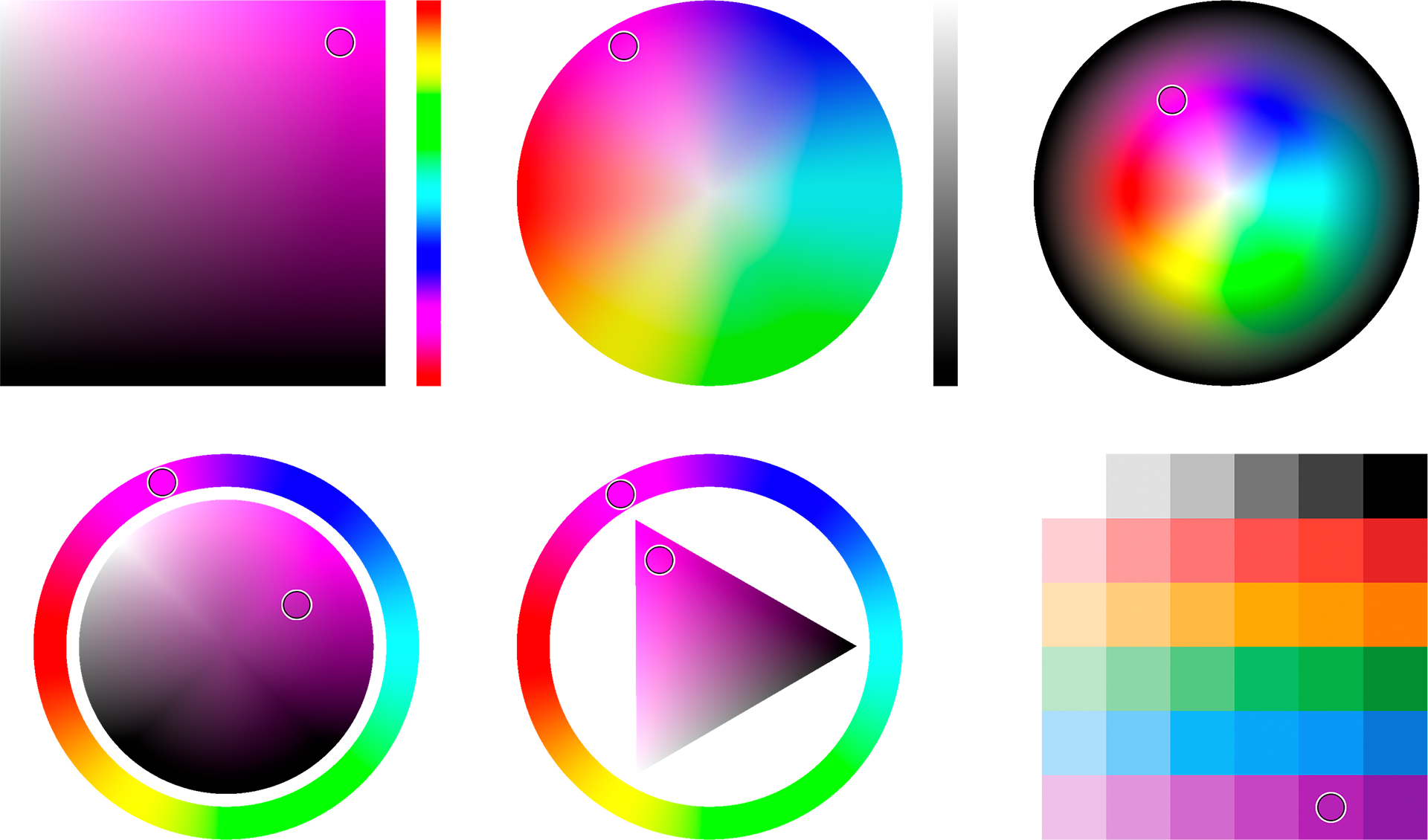Features
Designed for Production Workflows
- Studio-ready color picker: seven interchangeable layouts packaged as a single prefab, ready to drop into any Canvas.
- Artist-approved UI: TextMeshPro inputs, live previews, cursor contrast controls, and alpha management keep teams fast and accurate.
- Code or no-code friendly: Subscribe via UnityEvents in the Inspector or drive everything through
ColorPickerManagerAPIs and visual scripting. - ScriptableObject palette pipeline: generate harmonious swatches, keep them versioned in git, and update them at runtime without rebuilding scenes.
- Built for performance: GPU-driven gradients, minimal allocations, SRP compatibility, and tested on desktop, mobile, WebGL, VR, and consoles.
Palette Modes at a Glance
| Mode | Ideal Use | Why it matters |
|---|---|---|
| Rectangle | Desktop creation tools | Classic HSV rectangle with hue slider for Photoshop muscle memory |
| Circle & CircleFull | Stylus-first and compact UI | Circular gestures with optional single-control workflow |
| CircleCircle & CircleTriangle | VR, XR, precision art | Dual cursors and triangle geometry for fine HSV targeting |
| Texture | Sampling references | Feed screenshots, brand assets, or generated gradients directly |
| Palette | Curated color systems | Pairs with ColorPalette assets for harmonies and theming |
Palette Creation Workflow
- Create a
ColorPaletteasset (Create → XDPaint → Color Palette). - Select a harmony (complementary, triadic, tetradic, analogous, split-complementary, monochromatic, gradient, or custom).
- Tune the layout: choose horizontal, vertical, grid, radial, or smooth texture builds; adjust color count, smoothing, rotation, and per-handle overrides.
- Assign & reuse: link the asset in
ColorPickerManager → Palette Settings → Color Palette, regenerate at runtime for themes, and share across projects.

Sampling & Interaction Toolkit
- Bicubic interpolation and optional snapping deliver either silky gradients or pixel-locked picks.
- Transparency thresholding and ignored color lists keep texture samples clean.
- Dual preview swatches, alpha slider, and mirrored numeric inputs (HSV/RGB/CMYK/Hex) stay in sync instantly.
- Cursor contrast modes (None, Invert Color, Invert Lightness) maintain visibility over any art direction.
Performance & Platform Coverage
- Shader-based rendering keeps draw calls low; no pre-baked textures required for mathematical modes.
- Mobile and WebGL validated: 60 FPS on mid-range devices with shared material variants.
- SRP-ready (URP/HDRP) with proper keyword handling; supports deferred and forward render paths.
- Works with gamepads, touch, pen, mouse, VR controllers, and UI navigation events.
Integration Paths
- Inspector-driven: hook UnityEvents, adjust palettes, and toggle modes with no code required.
- Runtime scripting: set colors, switch layouts, update textures, or refresh palette assets through simple API calls.
- Visual scripting: exposed events and methods play nicely with Bolt, Unity Visual Scripting, or custom node graphs.
- Extensive samples: browse theme systems, persistence, accessibility, and texture-based generation in the Code Examples.
Ready to Explore?
- Start with the Getting Started checklist.
- Deep dive into controls in the Color Picker overview.
- Master palette workflows in Color Palettes.
- Compare every mode in Palette Modes.
- Need API details? Visit the ColorPickerManager reference.
